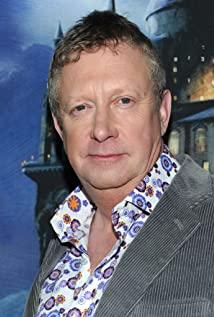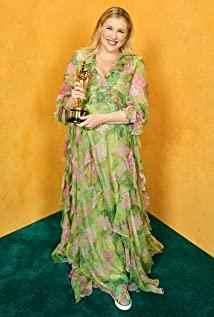lives. (I don't understand, what makes people lead such a sad life.)-Excerpted from the movie line of "Unidentified Male and Female". The movie "Unidentified Male and Female" raises an interesting question: Is the heroine's homosexuality innate? Many Douyou believe that the heroine was originally a "normal" woman, but because of society's compulsion, she had to be converted into a male, and her gender consciousness was "displaced". She identified with the identity of men and the social culture of men loving women. ——So, her "homosexuality" is misleading. ——But if we apply this theory, does this mean that becoming a "heterosexual man" is just a result of social and cultural influence? For example, is the process of a man identifying with the gender identity of a "man" as a process of growing up and being transformed into a "heterosexual"? ——Does this imply that we—— Heterosexuality is only the result of social and cultural functions, not a person’s innate natural force? (Note: What’s interesting is that we have seen that the above reasoning that constitutes a mockery of the heterosexual mechanism is based on the unwillingness to admit that the heroine is "gay". In other words, once you want to deny the heroine The homosexuality, you actually constitute a denial of the rationality of the heterosexual mechanism). The question that arises from this is, are women born? Long ago, Beauvoir, the founder of feminism, gave us an answer that we categorically denied. Many Douyou believe that since the director arranged a plot where the heroine runs excitedly in a skirt on the beach, it can be seen that she actually likes to be a "woman"—here, there seems to be a relationship between the skirt and the woman and heterosexuality. The necessarily associated equal sign. In our culture, the process by which a person becomes heterosexual is also the process by which he/she identifies with his/her gender identity. The director is very clever. He calmly arranged two men and women who challenged this "culture" in the film: one is a handsome gay viscount, despite his aristocratic identity and a masculine external image. , But his desire is directed to the same-sex male partner on the bed, thus betraying the subjective identity of desire constructed for men by the heterosexual mechanism; the other is the lesbian painter who is full of attractiveness to the surrounding women, she A strong body, a rigid style of speech and deeds, and unwavering sexual orientation all challenge the society's definition of "woman" and "homosexuality." Queer scholar Christine Esteberg believes that a society in which heterosexuality rules the roost retains only a sexual identity with a physiologically static meaning. So, is this sexual identity a physical reality? Or the construction of society? In the movie "Unidentified Male and Female", the power of heterosexuality seems It was concentrated in the bodies of several bearded men (beards represent the majesty of the patriarchal mechanism, such as male elders with beards relying on power to impose punishment on young (unbearded) boys; while another bearded doctor punishes women The oral sex scenes represent the desire direction of the heterosexual mechanism). From the history of sexual experience in the past, it is known that in the heterosexual hegemony where sex is equal to gender, man is abstracted as a stagnant biological symbol. ——The essence of human being as the existence of the authenticity of the body of desire, and the cultural definition of the body of desire is the continuous flow of the existence of desire, the generation of desire, and the growth of desire. The establishment of the ethics and morality of heterosexual desire comes from the social cultural norms of physical sex. From this, Western feminists realize the importance of liberating homosexuality for the feminist movement. Therefore, "Unidentified Male and Female" is not a simple one. For gay films, the director focuses more on discovering the bottleneck encountered by a heroine who cannot adapt to her gender identity in terms of gender identity. Regardless of whether the heroine actually identifies with a woman or not, she is essentially a woman who does not want to rely on patriarchy. . ——It might be more appropriate to call it a woman or a feminist film. In this sense, the section of the heroine wearing a skirt dancing in the wind on the beach should show the director's subconscious resistance to patriarchal consciousness. ——Compared with the suits that represent the institutionalization of men, the skirts may be more able to pin the ardent hopes that male directors have placed on the world of women. But also because of this episode, the film showed its own embarrassment in the transgender (female to male) unit. ——If we change the angle, for example, let a gay woman come to re-shoot the film, judging from the comments of some lesbian bean friends, maybe the heroine on the beach will be treated differently. Queer theory believes that the identity of heterosexual ethics comes from the state mechanization of this sexual culture and the resulting conventions accumulated in human consciousness. The philosopher Foucault provides a solution for this: Liberated from the shackles of ideas, questioned sex in sexual repression, and reduced sex to multiple sexual subjects. As a person who mixes biological characteristics and social characteristics, he tries to get rid of the contradiction of duality and establish multiple sexual categories in the dualistic sexual mechanism of restraint and anti-restraint, destruction and anti-destructiveness. If heterosexuality is an oppressive sexual system, then the emergence of homosexuality is a challenge to the heterosexual system. Although the 1/0 (T/P) role objectification in homosexuality comes from the structure of heterosexuality, the imitation effect of homosexual identity is not to copy heterosexuality, nor to imitate heterosexuality, but to constitute a kind of sexual desire of the same sex. Unique sex group body. In another transgender (male-to-female) film "The Crying Game", a transgender (male-to-female) film that belongs to Ireland, the heterosexual male protagonist "falls in love" with the "female" male protagonist by chance. The summary of life is: people do not have a fixed self. Human nature is both illusory and instantaneous. Only in the emotional explosion stage can the real human nature be grasped. The "dislocation" of physical and gender identity is a part of human nature under social aberrations. This ambiguous state of existence, the world has caused many things to fall into a dilemma due to this contradiction and uncertainty. The protagonist wants to restore the masculine appearance and masculinity of "he" who is "male disguised as a woman", but "he" feels distorted and uncomfortable. The director did not portray the pair as homosexuals. He seemed to be revealing that whether a person is a male or a female is just a form of body, and the soul and emotion are internal. Fan Popo, a young Chinese queer director, is also boldly portraying a member of the homosexual community in his works "The Dancer" and "The Cabinet": the "transgender" state of existence, and those men who are still young are not willing to be crushed by the years. The impressions pressed on the flesh, with bright and dazzling makeup and public body dance, show the suppressed human nature on the stage: charming, enchanting, bright, gentle, etc., which belong to women in the sense of modern Chinese literature. Proprietary adjectives are vividly interpreted by such a group of middle-aged and elderly men, which is breathtaking. The significance of Fan Popo’s work can be traced back to the queer scholar Butler’s masterpiece "Gender Trouble". In this landmark work that constructs a postmodern feminist theory, Butler criticizes the traditional feminist gender dualism. , Proposed an epoch-making theory, that is: gender identity is an expression of behavior by individuals living under the heterosexual power mechanism in accordance with the requirements of this power, and this behavior expression is deeply rooted in the dominance of heterosexual norms. In the historical social context, and subject to its regulations. In other words, there is no fixed gender attribute at all, but only gender behavior and expression. In this sense, it is not so much that homosexuality is imitating heterosexuality, it is better to say that heterosexuality itself is also a kind of "exercise" of gender identity. The function of queer film art is as pointed out by the postmodern feminist Wittig: to liberate the homosexual desire in everyone's heart. Homosexual desire has thus constructed a transgender bridge in the film. When Bernstein confused: Who is transgender? Butler, a queer scholar, answered very well. She said: Everyone is transgender. Chinese director Fan Popo’s queer movies seem to convey such a cultural message: In fact, everyone will not be satisfied with the existence of a gender/sexual identity culture. Only sharing and creating a diverse gender culture is human happiness. Source.
View more about Albert Nobbs reviews











